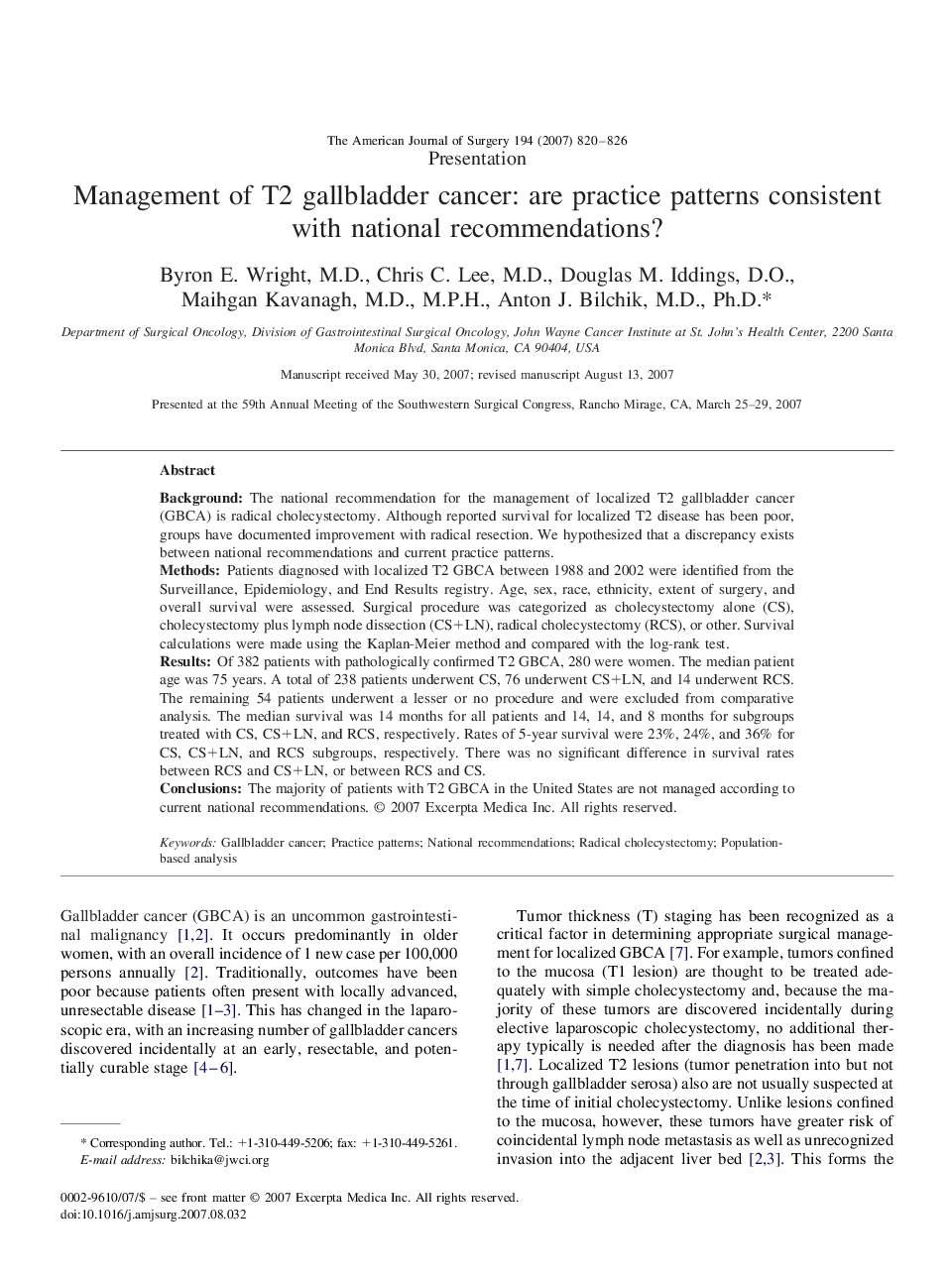| Article ID | Journal | Published Year | Pages | File Type |
|---|---|---|---|---|
| 4281488 | The American Journal of Surgery | 2007 | 7 Pages |
BackgroundThe national recommendation for the management of localized T2 gallbladder cancer (GBCA) is radical cholecystectomy. Although reported survival for localized T2 disease has been poor, groups have documented improvement with radical resection. We hypothesized that a discrepancy exists between national recommendations and current practice patterns.MethodsPatients diagnosed with localized T2 GBCA between 1988 and 2002 were identified from the Surveillance, Epidemiology, and End Results registry. Age, sex, race, ethnicity, extent of surgery, and overall survival were assessed. Surgical procedure was categorized as cholecystectomy alone (CS), cholecystectomy plus lymph node dissection (CS+LN), radical cholecystectomy (RCS), or other. Survival calculations were made using the Kaplan-Meier method and compared with the log-rank test.ResultsOf 382 patients with pathologically confirmed T2 GBCA, 280 were women. The median patient age was 75 years. A total of 238 patients underwent CS, 76 underwent CS+LN, and 14 underwent RCS. The remaining 54 patients underwent a lesser or no procedure and were excluded from comparative analysis. The median survival was 14 months for all patients and 14, 14, and 8 months for subgroups treated with CS, CS+LN, and RCS, respectively. Rates of 5-year survival were 23%, 24%, and 36% for CS, CS+LN, and RCS subgroups, respectively. There was no significant difference in survival rates between RCS and CS+LN, or between RCS and CS.ConclusionsThe majority of patients with T2 GBCA in the United States are not managed according to current national recommendations.
